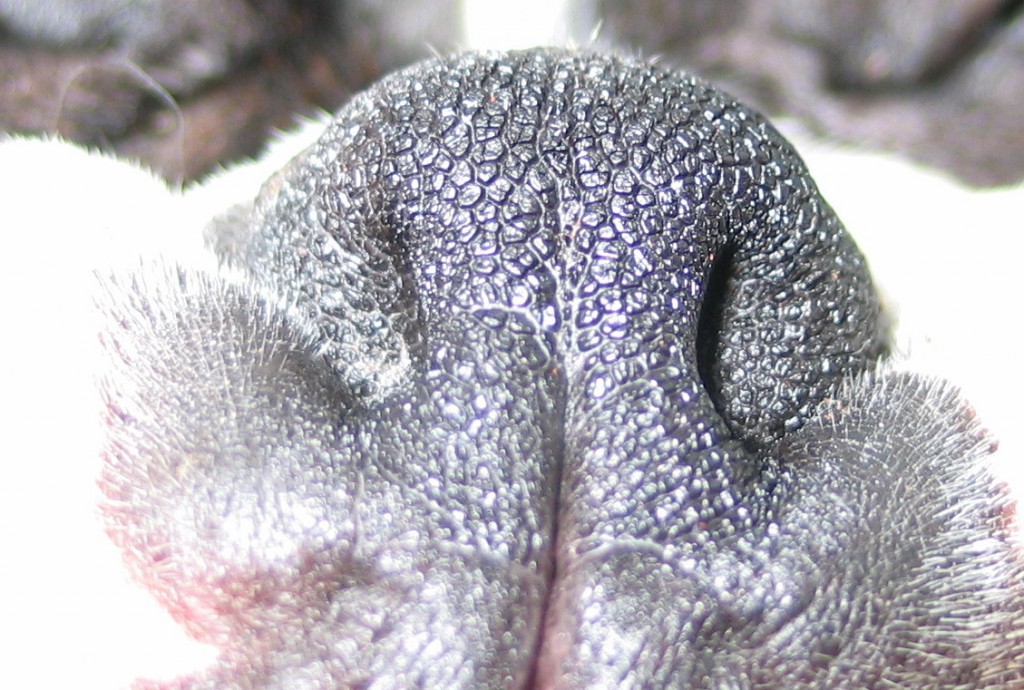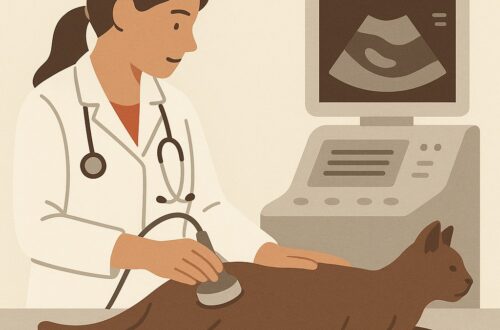With the warmer and more humid weather of the summer months comes an increased incidence of heat related events like heat stroke. Patients with shorter snouts/muzzles often have more difficulty acclimating to this type of environment due to the conformation of their airway. This week I discuss the implications of this unique anatomy so you can be as prepared as possible to help your short-nosed fur baby. Happy reading!
Brachycephalic Airway Syndrome – What is it?
Dogs are a diverse species with a myriad of breeds, and each has a unique body type and features. Accordingly muzzle shapes are vastly different among breeds, but can be groups into three categories:
- Dolichocephalic (long and thin snout)

- Mesocephalic (medium length snout)

- Brachycephalic (extremely flat snout)

Brachycephalic dogs are often born or acquire certain anatomic abnormalities of one or more structures in their upper respiratory tract. Cumulatively these abnormalities can lead to a partial obstruction of the airway, manifesting as difficulty breathing in air. Commonly affected breeds include:
- English bulldogs
- French bulldogs
- Boston terriers
- Pugs
- Pekingese
- Shih Tzus
- Boxers
Occasionally cats like Persians and Himalayans are born with or develop the same anatomical abnormalities, but this is not nearly as common as it is in brachycephalic dogs.

The classic anatomic abnormalities of brachycephalic airway syndrome are:
- Narrow nostrils (called stenotic nares)

- An elongated soft palate – below is a video a dog with brachycephalic airway syndrome; note the characteristic airway noise this patient makes due to his soft palate being longer than normal
- An underdeveloped narrow trachea (called a hypoplastic trachea)
These airway deformities create a uniquely abnormal airway and cause air turbulence in the respiratory tract. Pressure increases, and inflammation rapidly sets in, culminating in some other airway anatomy changes, including:
- Prolapse of small structures in the voice box (called everted laryngeal saccules)

- Swelling of tissue in the back of the throat
- Collapse of the voice box (called laryngeal collapse)
Brachycephalic Airway Syndrome – What are the clinical signs?
Dogs living with brachycephalic airway syndrome have increased noises from the nose and throat, particularly during inspiration. Most gag and/or cough, and many even vomit or retch after coughing (called post-tussive retching). Many of these dogs snore and have increased noises from their airways even when relaxed. With excitement, elevated ambient temperatures, and/or high humidity, many affected patients develop profound difficulty breathing; their gums turn blue (called cyanosis), develop high body temperatures (heat stroke), can collapse, and may even die.
Brachycephalic Airway Syndrome – How is it diagnosed?
The first step is diagnosing brachycephalic airway syndrome is being a brachycephalic breed dog. Remember not every dog with a flat face and short muzzle has these anatomical abnormalities. A complete physical examination allows determination of narrow nostrils (called stenotic nares). Radiographs (X-rays) of the neck and chest provide pictures of the windpipe (called the trachea) to determine if it is underdeveloped (called hypoplastic). Sedation is required to fully and properly evaluate the soft palate and voice box (called the larynx).
Brachycephalic Airway Syndrome – How is it treated?
Some patients with brachycephalic airway syndrome develop such difficulty breathing that they require emergency treatment, including sedation, placement of a temporary tube through the mouth into the windpipe (called an endotracheal tube), supplemental oxygen, interventions to lower body temperature, and a temporary tracheostomy tube.
Ideally patients with brachycephalic airway syndrome are identified and properly treated with surgery when they are less than 1-2 years of age. Nostrils can be widened with a minor surgery (called an alar wedge resection), the soft palate can be shortened (called a staphylectomy), and everted laryngeal saccules can be removed (called a sacculectomy). Some primary care doctors are comfortable performing these surgeries. If your family veterinarian is not familiar with these procedures, you should seek a consultation with a board-certified veterinary surgeon. High-risk breeds, particularly English bulldogs, occasionally require a temporary tracheostomy tube to allow tissue swelling and inflammation in the back of throat to resolve post-operatively. A permanent tracheostomy tube is often required to create a permanent opening if laryngeal collapse has occurred.
Patients with brachycephalic airway syndrome should maintain healthy weights, as overweight and obesity can exacerbate clinical signs. Affected pets should always be housed in comfortably cool and non-humid environments with access to fresh cool water at all times. Exercise restriction is also recommended because physical exertion can readily lead to overheating in these patients.
The take-away message about brachycephalic airway syndrome…
Brachycephalic airway syndrome is a relatively common constellation of airway anatomic abnormalities in dogs (and occasionally cats) with flat faces and short muzzles. Affected pets often snore, and get develop difficulty breathing in air, especially when anxious and excited. Without surgery, the long-term prognosis for patients with brachycephalic airway syndrome is poor. However timely surgical intervention and appropriate management at home can allow affected pets to lead happy and fulfilled lives with their families.
To find a board-certified veterinary internal medicine specialist, please visit the American College of Veterinary Internal Medicine.
To find a board-certified veterinary emergency and critical specialist, please visit the American College of Emergency and Critical Care.
To find a board-certified veterinary surgeon, please visit the American College of Veterinary Surgeons.
Wishing you wet-nosed kisses,
cgb




